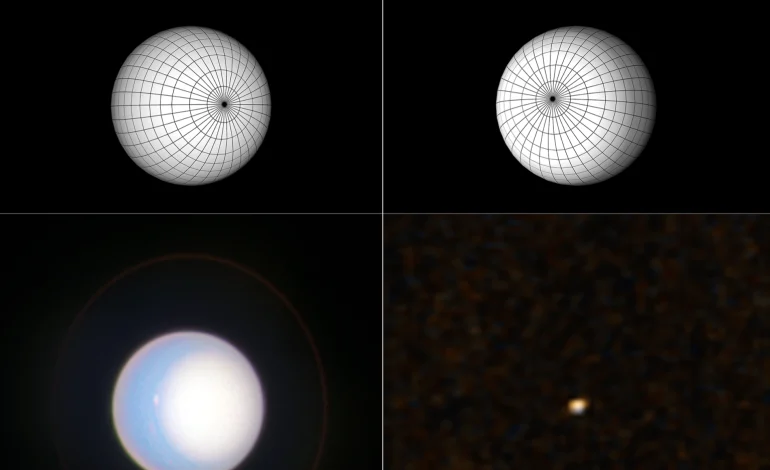Astronomers have gained new insights into Uranus using simultaneous observations from NASA’s Hubble Space Telescope and the New Horizons spacecraft.
By combining high-resolution images from Hubble with the distant vantage point of New Horizons, researchers have been able to deepen their understanding of the planet’s atmospheric properties, which could aid future studies of exoplanets orbiting other stars.
Although Uranus is often described as mysterious and relatively unknown, astronomers have significant knowledge about it compared to the more distant and enigmatic exoplanets. The new observations offer a unique opportunity to refine techniques for studying planets outside our solar system, using Uranus as a stand-in for gas giants orbiting distant stars.
NASA’s Hubble and New Horizons simultaneously observed Uranus, with Hubble capturing detailed images of its atmosphere from 1.7 billion miles away, while New Horizons, stationed 6.5 billion miles away, viewed the planet as a small, distant spot. This dual perspective enables scientists to study how the planet’s atmospheric features appear from different angles, providing critical context for future exoplanet observations.
Lead researcher Samantha Hasler from MIT noted that New Horizons observed Uranus to be dimmer than expected, revealing that planets may reflect less light when viewed from certain angles, such as when they are partially illuminated by their star. These findings help astronomers anticipate what to expect when imaging exoplanets with next-generation telescopes.
This research is particularly valuable as NASA prepares to launch new observatories like the Nancy Grace Roman Space Telescope in 2027. The Roman telescope will use advanced techniques to block out starlight and directly image exoplanets, offering a clearer view of their atmospheres. Additionally, NASA’s planned Habitable Worlds Observatory will be the first mission specifically designed to search for signs of life on rocky, Earth-sized exoplanets.
Alan Stern, principal investigator for the New Horizons mission, emphasized the significance of these observations, noting that they offer new scientific insights into the atmospheres of planets both within and beyond our solar system. These findings will guide future efforts to explore distant worlds, helping astronomers unlock the mysteries of planets around other stars.
The results were presented at the 56th annual meeting of the American Astronomical Society Division for Planetary Sciences in Boise, Idaho.
Sci Tech Daily, Space.com, and NASA contributed to this report.









